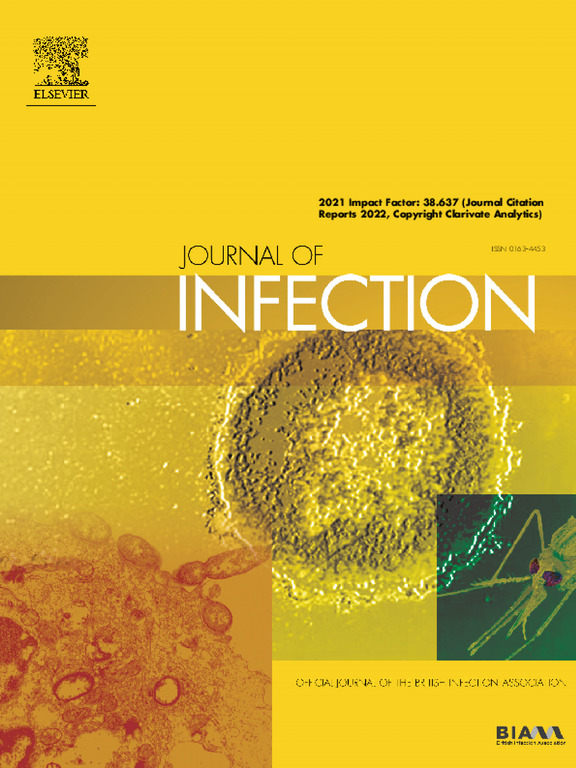Anopheles mosquito exposure is associated with age, gender and bed net use in areas in Uganda experiencing varying malaria transmission intensity
IF 14.3
1区 医学
Q1 INFECTIOUS DISEASES
引用次数: 0
Abstract
Objectives
The number of Anopheles mosquito bites a person receives determines the risk of acquiring malaria and the likelihood of transmitting infections to mosquitoes. We assessed heterogeneity in Anopheles biting and associated factors in two settings in Uganda with different endemicity.
Methods
Plasmodium falciparum parasites in blood-fed indoor caught Anopheles mosquitoes were quantified using qPCR targeting the Pf18S rRNA gene. Human DNA in dried blood spots from household occupants and mosquito blood meals was profiled using 15 short-tandem repeats (STRs) and analysed using a log-likelihood approach for matching of both single and multi-sourced blood meals and incomplete DNA profiles.
Results
The distribution of mosquito bites was non-random; school-age children (5–15 years) and adults (≥16 years) had a mosquito biting rate ratio (BRR) 1.76 (95%CI 1.27–2.44, P < 0.001) and 1.96 (95%CI 1.41–2.73, P < 0.0001) times that of children under 5 years, respectively. Biting rates were lower in bed net users (BRR: 0.80, 95%CI 0.65–0.99, P = 0.042), and higher in males (BRR: 1.30, 95%CI 1.01–1.66, P = 0.043) and individuals infected with P. falciparum (BRR: 1.42, 95%CI 1.03–1.96, P = 0.030), though the latter effect lost statistical significance in sensitivity analyses.
Conclusions
Adults and school-age children are at higher risk of receiving mosquito bites, and this has implications for the relative importance of demographic populations to onward malaria transmission to mosquitoes.
在乌干达经历不同疟疾传播强度的地区,按蚊接触与年龄、性别和蚊帐使用有关。
目的:一个人被按蚊叮咬的次数决定了感染疟疾的风险和将感染传播给蚊子的可能性。我们评估了乌干达两种不同地方性环境中按蚊叮咬的异质性和相关因素。方法:采用靶向Pf18S rRNA基因的qPCR方法,对室内吸血按蚊体内恶性疟原虫进行定量检测。使用15个短串联重复序列(str)对来自住户和蚊子血餐的干血点中的人类DNA进行了分析,并使用对数似然方法对单源和多源血餐以及不完整的DNA谱进行了匹配。结果:蚊虫叮咬分布具有非随机性;学龄儿童(5 ~ 15岁)和成人(≥16岁)的蚊虫叮咬率比(BRR)分别为5岁以下儿童的1.76倍(95%CI 1.27 ~ 2.44, P < 0.001)和1.96倍(95%CI 1.41 ~ 2.73, P < 0.0001)。蚊帐使用者的咬人率较低(BRR: 0.80, 95%CI 0.65 ~ 0.99, P = 0.042),男性(BRR: 1.30, 95%CI 1.01 ~ 1.66, P = 0.043)和恶性疟原虫感染者的咬人率较高(BRR: 1.42, 95%CI 1.03 ~ 1.96, P = 0.030),但后者的影响在敏感性分析中没有统计学意义。结论:成人和学龄儿童被蚊子叮咬的风险更高,这意味着人口统计学对疟疾向蚊子传播的相对重要性。
本文章由计算机程序翻译,如有差异,请以英文原文为准。
求助全文
约1分钟内获得全文
求助全文
来源期刊

Journal of Infection
医学-传染病学
CiteScore
45.90
自引率
3.20%
发文量
475
审稿时长
16 days
期刊介绍:
The Journal of Infection publishes original papers on all aspects of infection - clinical, microbiological and epidemiological. The Journal seeks to bring together knowledge from all specialties involved in infection research and clinical practice, and present the best work in the ever-changing field of infection.
Each issue brings you Editorials that describe current or controversial topics of interest, high quality Reviews to keep you in touch with the latest developments in specific fields of interest, an Epidemiology section reporting studies in the hospital and the general community, and a lively correspondence section.
 求助内容:
求助内容: 应助结果提醒方式:
应助结果提醒方式:


